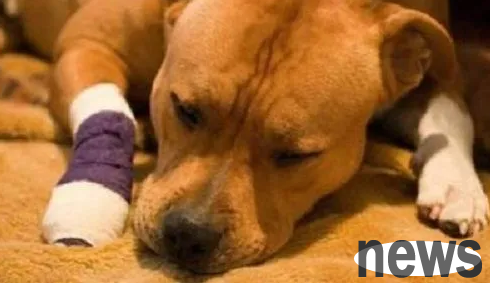We all know that dogs are very naughty pets. They are very energetic and like to go out for walks, run, and tear down homes. However, if they are too energetic, they will have troubles and they will be easily injured. When you find that your dog is afraid to touch the ground with one foot, and you don’t know the reason, you don’t know how to treat it. You can learn about it with this guide on raising cute pets.

1. Injured feet
If the dog's feet are injured, one foot will suddenly be afraid to touch the ground due to pain. In this regard, the owner can carefully check the dog's legs and foot pads to see if there are any wounds. If you find bleeding from a foot injury, you need to use clean gauze to press to stop the bleeding, then use saline to clean the foreign matter in the injury, and apply antibacterial and anti-inflammatory drugs to prevent secondary infection.
2. Long-term calcium deficiency
If the dog only eats a single food or dog food for a long time, resulting in an imbalance of nutrition in the body, it is easy to be deficient in calcium, causing a sudden situation where one foot is afraid to touch the ground. In this regard, the owner can take the dog to the pet hospital for a biochemical examination to check whether the calcium content in the body is normal. When the dog is deficient in calcium, the owner can feed the dog calcium tablets, big bone soup and other calcium-rich foods. At the same time, the owner should avoid excessive exercise of the dog, which will put a burden on the legs.
3. Fracture
If your dog is suddenly unable to land on one foot after strenuous exercise or a fall, it may be a fracture. In this regard, it is recommended that the owner immediately take the dog to the pet hospital to take X-rays to determine the location of the fracture and the condition of the injury, and choose external fixation or surgical internal fixation according to the specific situation. During the recovery period, it is necessary to provide the dog with nutritionally balanced food, supplement the calcium intake, and avoid strenuous exercise.

4. Arthritis
If the dog's joints are lightly touched and the dog reacts with pain, such as hiding, barking, etc., then it is likely to have arthritis. It is recommended that the owner take the dog to the pet hospital for examination and treatment in time. The dog can also be fed some joint-protecting food to enhance nutrition.
